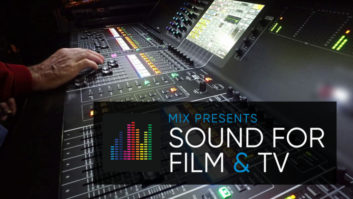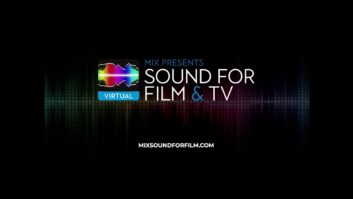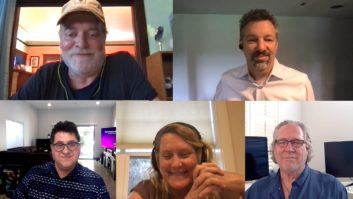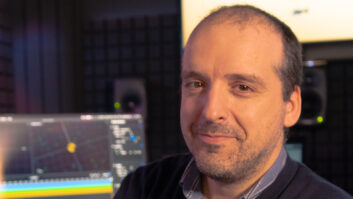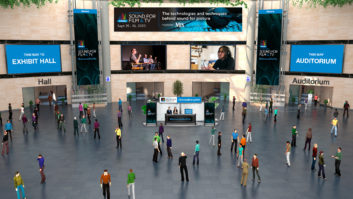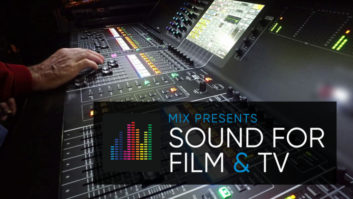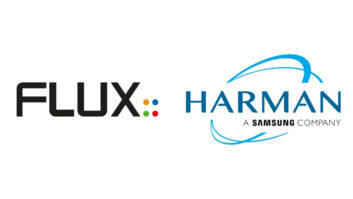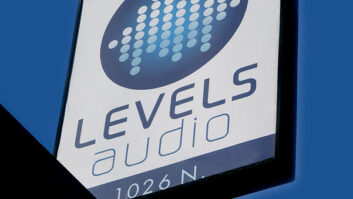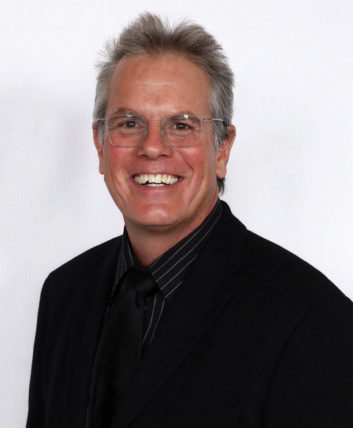
Chaos is a catalyst for change. And Covid-19 has certainly created chaos in the film industry. Productions put on hold; remote workflows hastily arranged. The logistics of “How can we…?” evolving into efficient solutions. This pandemic has afforded the opportunity to change, so what will professionals do with it?
The door for remote sound editing has been open for years, and Covid-19 delivered the kick that forced the industry to seek new ways of working in teams. Since March, big post-production sound facilities have been busy adapting their spaces, adopting new workflows, and developing safety protocols in preparation for re-opening. But for many sound editors with home studios, it’s been business as usual. That’s because the remote editing infrastructure has been steadily growing. The industry just needed a reason to fully embrace it.
Gearty calls their collaboration process “old-school.” It’s not complicated or complex. He talks on the phone with the editor, sends over materials via their assistants, gets feedback and then works through ideas. He says, “For me, it’s absolutely far more creative and far more valuable for the production for me to be on my own.”
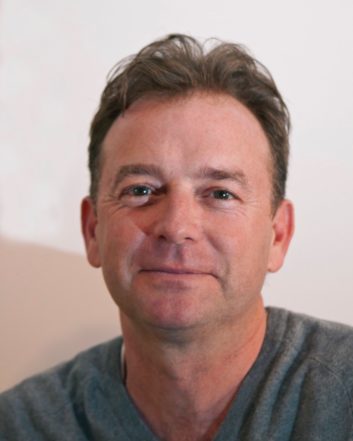
As for a home studio, that’s certainly an investment, but consider that the quality and affordability of audio tech is ever on the rise. “The industry as a whole has embraced the JBL 7 Series speakers with compression horn drivers as a solution for a quality monitor that can perform at the level that mixers are used to on dubbing stages,” says re-recording mixer and post-production technologist Eric Hoehn at Post2.0. “Pro Tools software and plug-in packages are becoming more nimble, more compact. HDX cards are no longer necessary to run 768 voices. It’s a subscription voice pack now, and a nice iMac Pro can do the trick, and actually outperform those HDX systems in certain ways.”
For Hoehn and Wylie Stateman—partners at Post2.0 in Topanga, Calif.—remote editing and collaboration is their daily routine. Hoehn states, “This crisis is accelerating the use of tools that already exist and have been battle-tested in many ways over the years.”
Rob D’Amico, Avid’s Director of Product Marketing for Audio Solutions, affirms.”To help optimize remote workflows, our goal now is to educate. A lot of the products and solutions that we offer today, and new products we just went to market with like the Pro Tools HDX Thunderbolt 3 chassis, the Avid S1 control surface, and the Pro Tools|MTRX Studio, with those you can really build out a home studio for a very affordable cost and guarantee that same level of quality from a home studio that you’d get in a traditional studio.”
Adam Lebowski, Avid’s Product Marketing Manager for Audio Solutions, says that Pro Tools, by design, supports the rise of smaller environments participating in bigger workflows/bigger productions. He explains, “With Pro Tools as a common platform, we have built-in foundational competencies that are already set up for collaboration and interoperability. That common thread between systems allows for a level of consistency and compatibility that is crucial to the audio post workflow, and has been for a long time.”
Avid’s Pro Tools Cloud Collaboration—initially positioned for music production — is an existing capability that allows multiple editors to simultaneously work on the same session. Over the years, this capability has been utilized in some workflows for audio post. For instance, a Foley recordist in one location could share their recordings with a Foley editor in another location to cut and sync to the picture while the Foley session is happening. “It’s not an end-to-end workflow for audio post but there are pieces of Cloud Collaboration that have a very high value for remote workflows,” states D’Amico.
Parabolic, WB and Remote ADR
Pro Tools is certainly the backbone of Parabolic NYC‘s approach to recording remote ADR and massive loop group sessions, which they’re able to do in real time and to picture. Their biggest group session so far was 15 actors simultaneously, located from New York to L.A. Owner/supervising sound editor/re-recording mixer Lew Goldstein says, “A big part of this process was being able to do things in real time. We’re hearing the talent in real time so we can help them adjust their configurations level-wise, their proximity to the microphone, and the environment they’re in. We spend a good half-hour to 45 minutes getting each of the talent situated, so that when we start recording there isn’t a significant difference between each of the individuals.”
Parabolic’s setup uses two types of connections: the talent connection and an observer connection that allows the directors, producers and creatives to be a part of the session. The observers can see the recording session to picture. And they can communicate with the talent and engineer in real time. It took Goldstein weeks to perfect his method from a technical standpoint—finding the right mix of third-party applications that could interface with Pro Tools and pass audio and video back and forth between them.
“That was the original big battle that took me quite a bit to solve. And that’s what makes the whole system work,” he says.
Then, with the help of Dann Fink—loop group director and co-owner of Loopers Unlimited in New York City—Goldstein perfected their process by doing numerous test sessions with talent across different locations. “The key with this whole thing is to make it simple,” he says. “It has to be simple enough that I can explain it to my mother and have her do it. Being able to implement it and make it work was very important. You can sacrifice a little bit of the sound quality, but if you can’t do it at all then it’s pointless.”
Another huge consideration was making it Covid-19 safe. Parabolic put together recording kits to send to talent—appropriate mics, preamps, and audio interfaces packed into separate Pelican cases that are stored in New York and Los Angeles for fast delivery. When the kits are returned to Parabolic, “they go through a serious cleaning and sterilization process. We have a decent Covid-19 protocol for how the equipment is sterilized,” Goldstein says.
At WB Sound’s Burbank facility, they’ve also developed a proprietary method of recording remote ADR, called “ADR… At A Distance.” It’s also a self-contained kit shipped to the talent that requires minimal setup. With ADR… At A Distance, the ADR mixer has control over the remote mic preamp gain and headphone levels. Picture is sent in real time to the talent, and the filmmakers view a latency-corrected video stream that provides high-quality video and audio in sync. As with Parabolic, WB Sound’s goal was to make their remote ADR process mirror the studio experience as closely as possible.
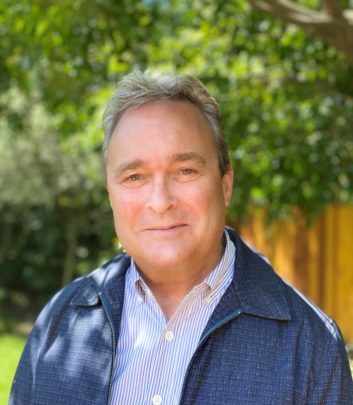
Additionally, WB De Lane Lea in London developed “Alfred,” which Kim Waugh (WB Executive Vice President, Worldwide Post Production Services) describes as “a new, innovative workflow platform that gives the client complete control of their content, anytime, anywhere in the world, through a fully integrated, secure, cloud-based system.” For a global studio system like WB Sound, with locations in Burbank, New York, and London, having access to content from anywhere in the world is a big step forward into supporting a distributed workforce.
“This period has been a fortunate experience for us because it’s driven us to look at how we could perform alike activities in a distributed fashion—meaning, working from remote locations or from home studios,” Waugh says. “Our talent and artists have made investments in gear and WB has made significant investments during this time to help with the distributed workforce. That is, having workstations and interconnectivity and processes and technologies in place so that a number of activities—like picture editing or sound editing—could be done in a remote fashion.”
Decentralized Global Workforce
It’s a way of working that Stateman foresees as the future of the post sound business. He says, “Creativity is always going to be the main driver for content producers. Creativity is no longer confined to a vendor-facility model. It’s going to be distributed around the world, and we’re going to work in a more co-located data system.”
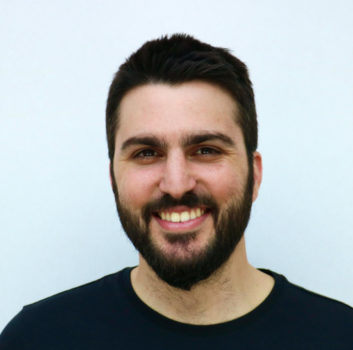
Hoehn, his partner in Post 2.0, adds: “This crisis will accelerate the elimination of the geographic requirement of doing this work. People in L.A., people in New York, and London—these hubs where sound editors and mixers traditionally have gathered—they won’t be limited to those places anymore. We hope it creates a situation where people can start working anywhere they want.”
A global workforce would open up the post sound talent pool, which WB Sound plans on diving into with eyes open. Waugh says, “It’s all about our people, our talent. One of the greatest priorities to come out of this pandemic has been a rallying cry from all of us at Warner Media and Warner Bros. that we must really address diversity and inclusion—that is the future of our business. We have to be defiant in how we act now to confront the ills of the past, to confront discrimination, and it’s a key social issue for all of us in the community.
“When we talk about ‘how it’s been,’ well, we’ve had technical challenges and innovation, but we’ve had social change of the realization that the only way this magnificent work is completed is by people,” he continues. “Anyone can buy the gear, and we can innovate and invest. but it’s really about the people. That’s why I bring that to the forefront. It’s so important for us to talk about. We’ve had a lot of hard-hitting conversations and soul-searching about the composition of people that make up the post production community itself. So, that’s front and center for me alongside the ongoing challenges of how we represent our filmmakers and producers and deliver content. It’s an equal part of the equation.”
Having technology and workflows that allow sound artists to be independent of a traditional studio environment “is going to allow for more recognition for what sound artists contribute to a production,” adds Stateman. “It will allow us to make better use of time and these new democratized materials that are not solely in the hands of vendors and large capitalized facilities.
“This opinion comes from five years of experimenting with this decentralized way of working,” Stateman continues. “In the past six months, we have been proving out this model that it’s not a competition between science and technology. It’s an effort to take future technological advances in audio software and communication tools and apply them in a novel way to doing better-quality work and to having an approval process that makes sense for our clients. It’s not as facility-dependent. It’s more artist-dependent.”
The Hidden Benefits at Home
A major benefit of a decentralized approach is a better work/life balance. In the five years that he has been working as a freelancer at PostWorks NY/Technicolor, supervising sound editor/re-recording mixer Ruy Garcia has built a home studio that mirrors the capabilities of his studio at the Technicolor facility—including mixing in Dolby Atmos. But the huge advantage of his home studio is being home.
“That time spent on commuting or setting up is now available to spend on the project or with your family. I grew up in Mexico and we used to always eat together as a family. That was a big part of our upbringing. I enjoy being able to do that with my daughter and wife every day—just being able to check in and say, ‘How are you doing? Do you need help? Is your homework going okay?’ And then I can go back to mixing. Those little moments are priceless.”
Gearty agrees: “I don’t have to commute, so already I’m happier. And, I can get up at 2 a.m. with an idea and start playing with it. It’s ideal for the way I work. I’m more goal-oriented so I’m better at doing that when I’m on my own. You’ll get more out of me that way than by putting me in a box from 9 a.m. to 6 p.m. But it’s funny, because I do miss the work environment of a studio and going across the hall to talk to the Foley guys and saying, ‘Hey, let’s try this.’ But you change. You schedule that.”
C5’s Foley team—Foley artist Marko Costanzo and mixer George Lara (nominated for a 2020 Emmy for ‘Outstanding Sound Mixing’ on Amazon’s Marvelous Mrs. Maisel)—has been Covid-19 safe from the start even though they don’t have a remote-based workflow. Lara is in the control room and Costanzo is on the Foley stage. Each room has an individual air conditioning system. They even have separate entrances to the building. “We’re in a Foley bunker,” jokes Lara.
Costanzo says, “We have an advantage over other Foley teams that have two artists or more in a room and work in tandem. They had to figure out how to change their workflow to something that we’ve been doing for years—working as a single team. Our way of working is already safe in these times of social distancing.”
The biggest impact so far has been a positive one—more time to do the work “and the flexibility to jump to different projects in a flip of a dime thanks to the Pro Tools HDX platform we record with,” he says.
Lara and Costanzo have been working on The White Tiger for sound supervisor Jacob Ribicoff at Technicolor-PostWorks NY, Stillwater for sound supervisor Paul Hsu at C5, and Mosquito Coast for C5’s sound supervisor Ron Bochar. Lara says, “We get full control of the movies or shows and we break down the spotted sessions so we can record expediently and feed the different projects to Foley editors on both coasts so they can meet their respective deadlines without sacrificing time or the quality of the sound.”
With movie release dates being pushed back as U.S. theaters remain closed, Garcia was also afforded more time to spend on a film. He’s currently working on A24’s After Yang with director Kogonada.”Thanks to the festival deadline opening up, we’ve had extra time to work on nuanced moods and focus on a more beautiful and detailed sound design,” he says. “I’ve always been an advocate of having more time than having more money. Limits can be creatively helpful, but it’s fundamental to be able to discuss and digest your choices. You notice that with music composers, even with huge resources and expectations, they’ll end up having just a couple of weeks to fulfill an intricate score. We seem to be always rushing to meet some looming deadline, so that part—having extra time—is welcome.”
Post sound is the last step in the process, so (the lack of) time has always been an issue. When productions do start up again, a decentralized post sound process could help. Hoehn says, “Having your teams spread out across multiple time zones globally can increase your productivity from an eight-hour day to a 24-hour day.”
“We call it ‘chasing the sun,’ this 24-hour creative workflow,” adds Stateman.
The Technology-Time Relationship
There are tons of collaboration tools to support a decentralized creative process, like: Evercast for streaming audio and video in sync, Source-Connect (and its various components) for remote recording and mix reviews, Zoom for face-to-face exchanges, Slack for keeping conversations and notes organized, Resilio Sync for sharing assets and folders among multiple team members, and Aspera for large file transfers between studios.
Of course, the faster the Internet speeds the better these tools work, especially when uploading. So another option is a co-location facility that offers rentable rack space to house your media server and provides a 1 Gbps Internet bandwidth. “You can host your entire media server and have your team connect to it through Resilio Sync, for example. You can set up an entire distributed IT backbone with huge amounts of upload/download speed,” says Hoehn.
But rather than committing to specific technologies right now, Stateman says, they “are committed to an idea. The idea is that work is no longer indexed to time spent in the office. It’s a creative experience and a collaborative experience, and we want to employ any of the tools that will help us get there.”
Technology is there to support the flow of ideas, not define the workflow. Creativity happens all the time, not just in the studio. “There might be a time when I have to mow the lawn,” says Gearty. “So I’ll finish up a scene and go mow the lawn. And when I’m mowing the lawn, I’m constantly thinking about things to try. And when I’m done mowing, I go up to the studio and do it. It’s so much better. It’s like being goal-oriented instead of being time-oriented.”
But what about mixing? And getting the directors and producers to see and hear the content properly for approval?
Changes and Approvals
According to Hoehn, there needs to be a clear understanding of what is trying to be achieved in order to mix appropriately for that medium. He asks, “Are we working toward completing content that will play on Netflix or on Amazon, streaming on TVs, tablets, and through soundbars? And how do we get directors and the people in the approval chain to have the right technology with the right hardware to participate?”
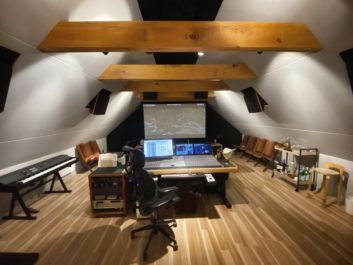
Garcia—who finished up the mix on the Apple TV+ series Dickinson in his home studio when PostWorks NY/Technicolor shut down—says that Apple sent Blu-ray players and Dolby Atmos soundbars to all the creatives involved so the mix review process would be more consistent across different listening environments. The clients play back the content on their own and then submit their notes.
“In a way I prefer it because you’re able to focus on the whole arc of the film instead of having a bunch of reactive moments, with bursts of, ‘This I like and this I don’t like,’” he says. “Instead, we can feel the emotional rhythms of the story and understand how they work, recognize what is accentuating performance and what is helping with dynamic impact. You’re able to understand why it should sound one way or another, and appreciate the full shape of the sound and the show.”
Oscar-winning re-recording mixer Tim Cavagin at Twickenham Studios has had a similarly positive experience with their remote mixing feedback process. On a recent project, the TW1 mix team was sending mixed reels to three different continents at the end of each day for the execs and the director to review. Then they’d send their notes back to Cavagin the next day.
He says that pre-pandemic, with the director, editor and execs in the room, “they may have been used to hearing the sound mix in a certain way over the previous months. Now, with just the key sound crew in the room, we have been able to explore and present our preferred approach, which may not have always been possible with a full room. I’ve missed having that extra-close relationship you can create with everyone in the room together, but at the same time, I’ve also enjoyed the certain extra freedom it’s given us in the mix.”
At Parabolic, Goldstein sits alone on the dub stage and sends a live feed from his console to the creative, who can listen over headphones, laptop speakers or TV speakers. “We’re mixing for the medium,” he says. “If a lot of people are going to be listening over the laptop, for streaming content, then it’s now easy for the client to listen to the mix on the laptop. I can make mix adjustments accordingly and the client can put their headphones back on and check it. The client has control over how they listen to the material.
“We are capable of sending anywhere from two tracks of audio up to 64 tracks of audio,” he adds. “We’ve already done a remote 5.1 mix session and we’re going to do some remote Atmos mixing that I’m hoping to transmit—to do a remote review in Atmos. So I’m excited about experimenting with that.”
At Parabolic, Goldstein sits alone on the dub stage and sends a live feed from his console to the creatives who can listen over headphones, laptop speakers or TV speakers. “We’re mixing for the medium,” he says. “If a lot of people are going to be listening over the laptop, for streaming content, then it’s now easy for the client to listen to the mix on a laptop. I can make mix adjustments accordingly and the client can put their headphones back on and check it. The client has control over how they listen to the material.”
“We are capable of sending anywhere from two tracks of audio up to 64 tracks of audio,” he adds. “We’ve already done a remote 5.1 mix session, and we have an upcoming Dolby Atmos mix session that I’m hoping to transmit in Atmos for a remote mix review. I’m excited about experimenting with that.”
Current and emerging technologies can support remote editing, mixing, and collaboration. But it feels like there’s something missing—a human connection of sorts. Waugh agrees: “It’s hard to beat the experience of going to a theater and having that social interaction of people laughing alongside you. That is the theatrical experience and you can’t get that when streaming content in your home. There isn’t the emotional energy surrounding it. When I think about remotely cutting picture or sound and remotely mixing in different fashions, I think, ‘What do we lose?’ Because it’s all about human emotion and adding emotion to the content. So, ‘What do we lose? And how will that be defined?’ We’ve gone from one-on-one interaction to really a technological interaction. I don’t know if we are wired that well to adapt that quickly to be creative in that fashion, working that way.”
Will there be a return to a studio-central way of working post-pandemic? Or will a decentralized approach be the way of the future? WB Sound sees a hybrid approach as being the new norm, combining the campus environment with the option for artists and filmmakers to work remotely, “as opposed to always having to be in a specific location on a specific day,” says Waugh. “The investment in these tools will allow for flexibility that has been fairly rigid in the past because of security controls, bandwidth, streaming, and communication tools.”
Bringing It Back Slowly, One Step at a Time
At Formosa Group in Los Angeles sound and music editorial have largely transitioned to a work-from-home model, while on the mixing side, the dub stages have remained open for the mixers with almost all client participation happening via remote collaboration. That has held true for ADR, too, with the mixer on the stage working with the talent remotely. That’s changing, though. “Since June, there has been a small client presence on the stages for review and approval of work,” says Matt Dubin, Formosa Group’s Executive Vice President.
Dubin finds that while these remote workflows have enabled the process to move forward, there is frequently a loss of efficiency and momentum. “To that end, I anticipate that there will continue to be an incremental return to the studio environment,: he says. “While some aspects of remote collaboration may persist, I feel that the ability to get back to the ‘team sport’ of sound will prevail and that our industry will gravitate back to the facility-based paradigm as we hopefully see a decline in the Covid-19 caseload through effective Public Health management and/or an effective vaccine.”
TW1 (Twickenham Studios)—located outside London, in the borough of Richmond—has already reopened their facilities to welcome a major Hollywood production. They recently recorded full crowd ADR on A Gift From Bob—the follow-up feature to A Streetcat Named Bob—on the Theatre 2 Mixing Stage. Each of the six voice artists in attendance had their own mic and a sectioned-off, six-foot space.
Reopening was possible after the introduction of stringent “TW1 Studio Safe” measures that include: social distancing on all their stages, facility-wide mask and glove usage by staff, routine daily temperature checks and Covid-free self-certification forms via the TW1 app, following on-set and in-theater protocols established by an industry task force and government guidelines, having a bio-fogging specialist on standby to treat each space being hired by productions, installing localized sanitation stations at each studio entrance and all doors around the facility, rigorous new cleaning standards using earth-friendly products, and more. Their approach is a good example of how other studios might tackle reopening in this pandemic era.
Twickenham Studios’ new Managing Partners Piers Read and Jeremy Rainbird feel that “with the measures we have introduced at TW1, we think it is a perfect place for people to re-boot various sound and other post-production projects. With the demand for content and the need to entertain people through these turbulent times, we want to enable creativity and ideas to come to life safely.”
TW1 mixer Cavagin concludes: “I feel Twickenham has adapted incredibly well. So much so that after a few days it felt like the new norm. Piers [Read] and Jeremy [Rainbird] have gone over and above, working with the team to make TW1 as safe as possible. I actually wonder whether this remote style of mixing will become the usual way in the future, especially when costs are of great significance.”
